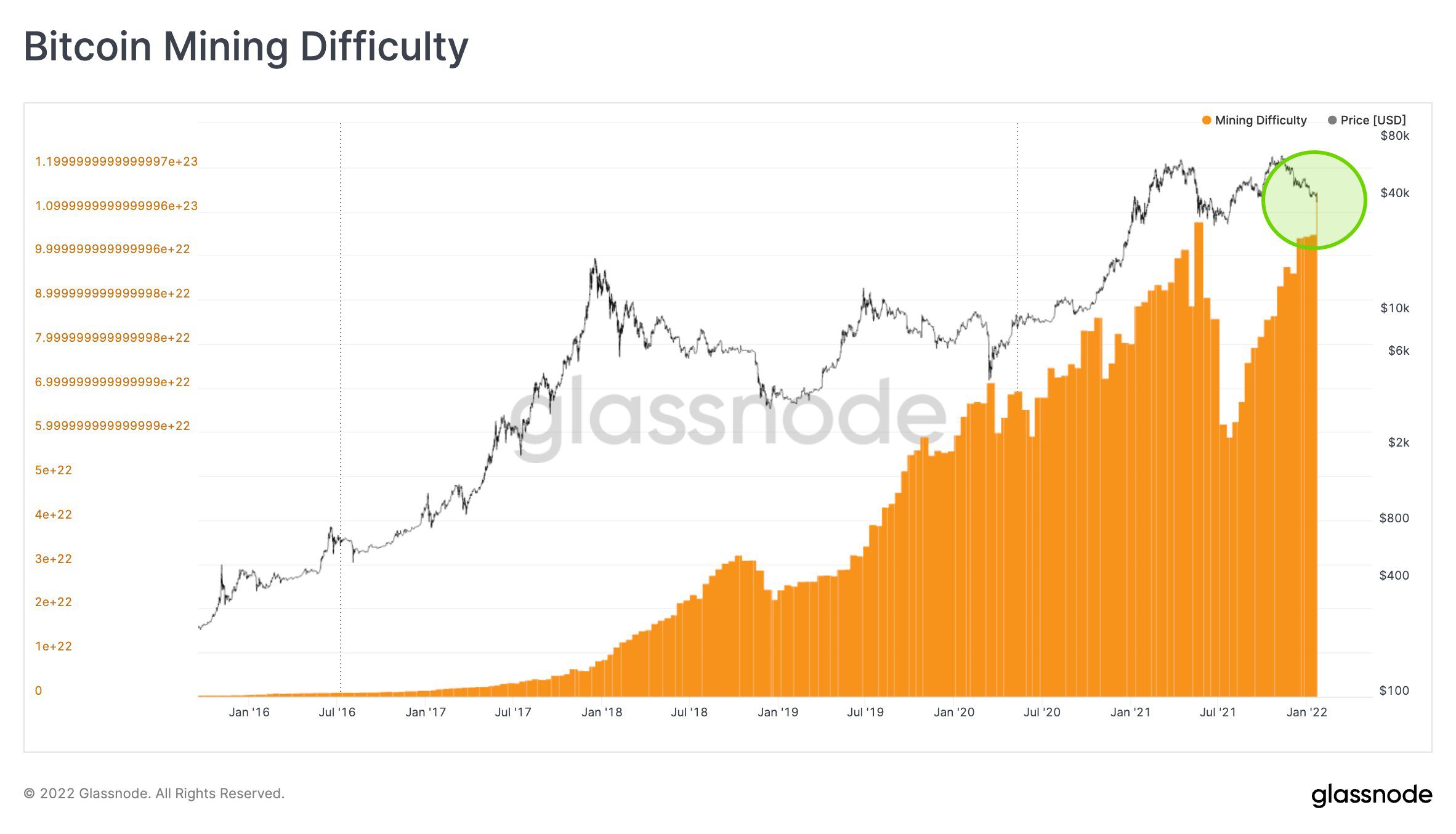As it gets colder, the difficulty of mining Bitcoin is likely to rise by the most since January. Some analysts are starting to see this as the start of a new seasonal trend in bitcoin mining.
On Wednesday, the difficulty of mining bitcoin (BTC) is expected to grow by about 9% as miners in North America start to crank up production before the colder months.
It will be one of the biggest jumps since August 2021, when miners started coming back online after the industry was banned in China, which at the time was home to 44% of mining activity.
Bitcoin’s difficulty automatically changes so that the time it takes to mine a bitcoin block stays around 10 minutes, depending on how much computing power is on the network. The level of difficulty goes up as the hashrate, which is a measure of computing power, goes up. The level of difficulty goes down as the hashrate goes down.
So far this year, January saw the biggest increase in network difficulty (9.32%).

Bitrawr, Coinwarz, and Luxor’s Hashrate Index all think that this time, the metric will grow by about 9% and reach about 31 trillion. According to data from mining pool BTC.com, that number is very close to the all-time high of 31,25 trillion, which was reached on May 5.
Analysts who spoke to CoinDesk agreed that the increase in hashrate and difficulty is due to more and better machines coming online, as well as the result of heatwaves getting smaller.
“The post-summer network hashrate boom is due to the delivery of more efficient hardware, the temperature drop in the U.S. during the summer, and the delivery of old-generation machines to low-cost regions,” said Ethan Vera, chief operating officer at mining services company Luxor Technologies.
New seasons
In the middle of July, the hashrate of the Bitcoin network went down because miners in North America turned off their computers when heat waves hit the continent. Mining rigs not only need a lot of energy to do their work, but they also give off a lot of heat. This means that companies need even more energy to cool them down.
But at the same time, as people and businesses turn on their air conditioners, the demand for energy across the grid also goes up. In some energy markets, miners can sell power back to the grid. This means they can make more money by turning off their machines than they would by mining crypto.
Some people in the industry world, like Vera of Luxor, say that bitcoin mining could be starting a new seasonal trend. Before China banned the industry in May 2021, the hashrate would go up from May to October in Sichuan during the rainy season, when miners took advantage of cheap hydroelectricity.
Since a lot of miners have moved to Texas, where they use about 1.5 gigawatts (GW) of energy, and where it gets hot in the summer, the opposite trend might start to happen. In its mid-year mining report, which came out last week, Galaxy Digital said, “Network difficulty goes down in the summer, but it goes up sharply in the fall and winter when miners come back online.”

New machines
In the last month, new technology has been added to all facilities at the same time. “In the last month, a lot of new machines have come online, which has raised Bitcoin’s seven-day average hashrate by 7.6%, from 210 EH/s to 226 EH/s. “Miners are plugging in new models like the Antminer S19 XP, which they started getting in batches starting in July,” said Colin Harper, head of research and content at Luxor Technologies.
But older machines from other countries that came online also increased the hashrate: “When the price of bitcoin dropped in the second quarter of this year, a lot of miners in North America and Northern Europe turned off their machines from the middle generation. Then they started sending the machines to places with low costs, like Venezuela, and people are starting to plug them in,” Vera said.

Kevin Zhang, senior vice president of mining strategy at Foundry, a company owned by Digital Currency Group, which is also the parent company of CoinDesk, said that the trend is likely to continue as more new machines come online.
















